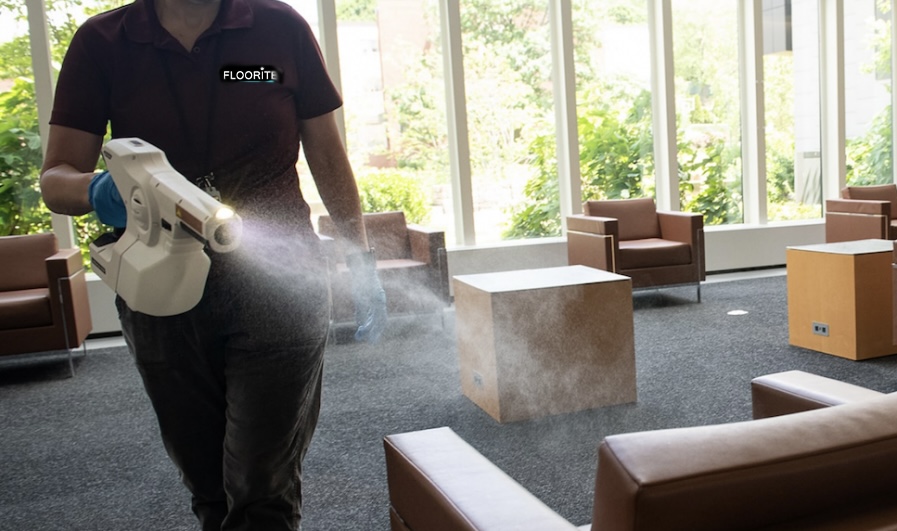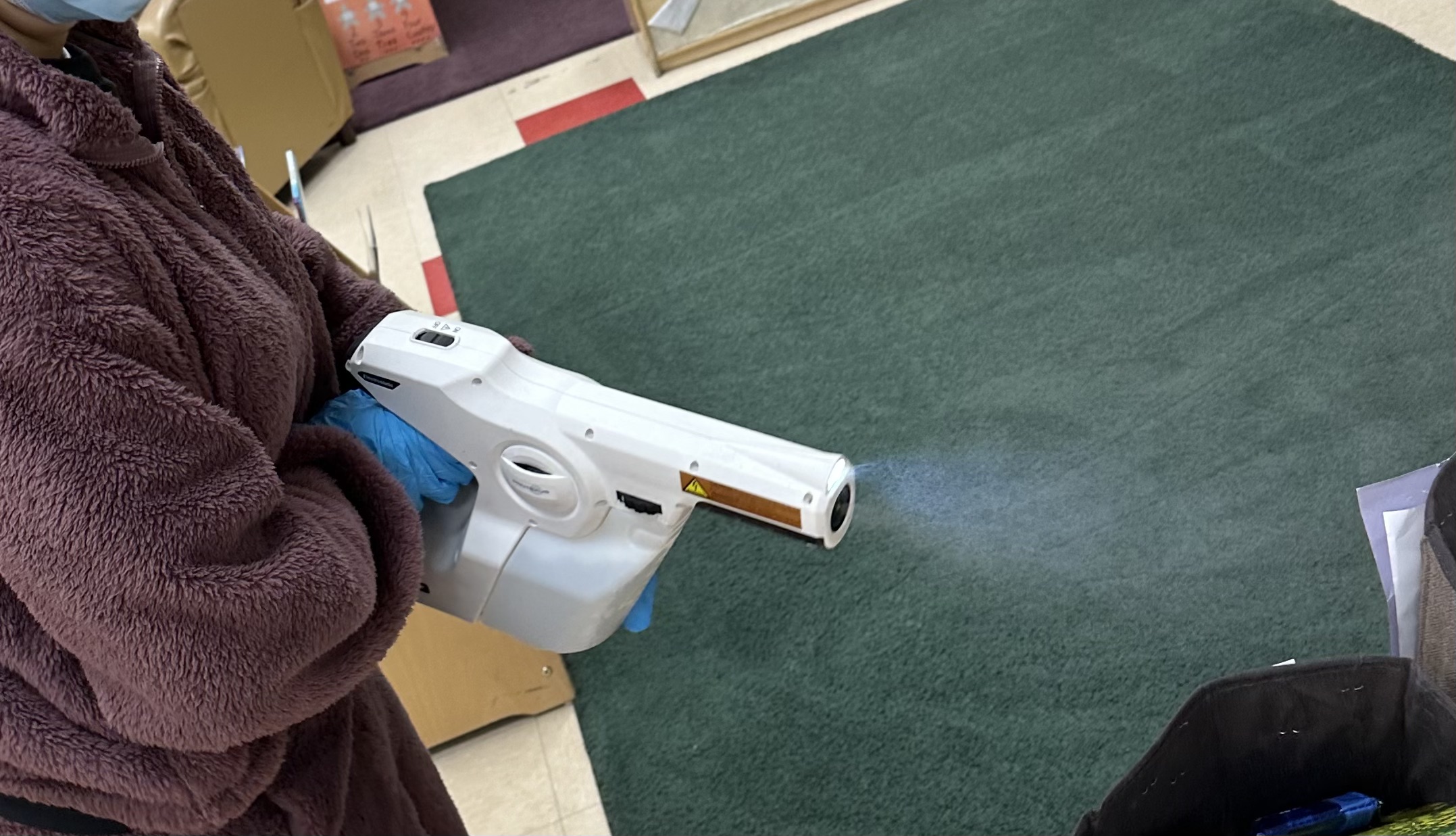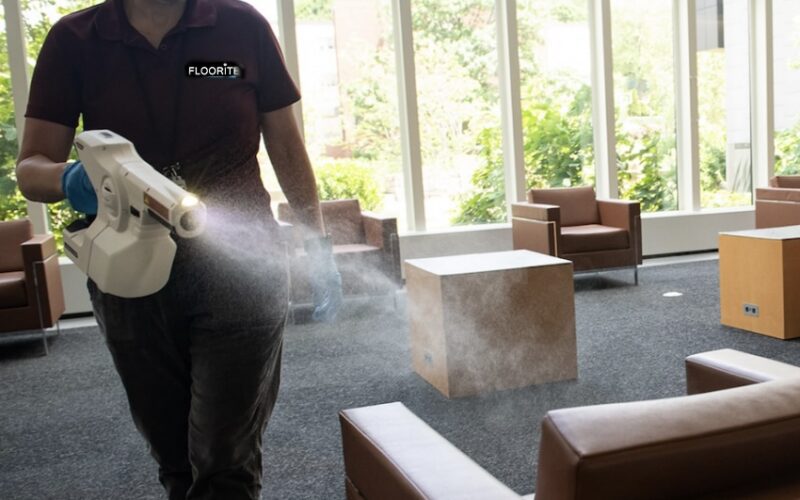Click on ‘Generate blog’ button above to generate complete article.
How Electrostatic Disinfection Services Enhance School Safety and Hygiene
Introduction
In today’s world, maintaining a clean and safe environment in schools is more crucial than ever. With students, teachers, and staff spending countless hours in educational facilities, it’s essential to adopt effective cleaning services to ensure everyone’s health and well-being. Enter electrostatic disinfection – a game-changer in the fight against germs and viruses. This innovative technique not only enhances school safety but also promotes top-notch hygiene, creating a nurturing and worry-free space for learning and growth.
Understanding Electrostatic Disinfection

What is Electrostatic Disinfection?
Electrostatic disinfection is an innovative cleaning technique that has gained significant attention for its efficiency in maintaining a high level of hygiene and safety, especially in school environments. Unlike conventional cleaning methods that often involve manual scrubbing and using liquid detergents, electrostatic disinfection employs technology to achieve thorough and comprehensive surface sanitation. This method utilizes an electrostatic spray system, which charges disinfectant solutions, allowing them to wrap around surfaces evenly and cover hard-to-reach areas. This cutting-edge approach ensures that the disinfectant coats all surfaces, effectively targeting germs, bacteria, and viruses across educational facilities.
How Electrostatic Disinfection Works
Let’s delve a little deeper into how electrostatic disinfection actually works. Imagine spraying a fine mist containing disinfectants that has been electrically charged. When the spray is released, each droplet receives a positive electrical charge. Now, you might be wondering why this matters. Well, most surfaces (like those in schools) naturally have a negative or neutral charge. Thanks to the laws of physics, opposites attract, so the positively charged disinfectant droplets are irresistibly drawn to these surfaces—and not just the flat, obvious parts.
This attraction results in an even coating of disinfectant on even the most intricate or awkwardly shaped surfaces, ensuring no area is left untouched. In schools, where children are touching everything from desks and doorknobs to sports equipment and shared technology devices, this level of coverage is invaluable. Essentially, electrostatic spraying helps to create a safe envelope around objects that ensures cleanliness you can count on.
The Science Behind Electrostatic Technology
The magic of electrostatic disinfection lies in its scientific principles. At its core, this technology relies on basic electricity principles—charging particles to achieve a specific effect. When the disinfectant solution passes through a special nozzle, it’s atomized into tiny droplets, and an electrical charge is applied. Due to their small size and charge, these disinfectant particles are not only attracted to but also actively seek out surfaces to settle on.
What’s remarkable is that this technique minimizes the use of disinfectant solutions. Since each droplet clings efficiently to surfaces, there’s minimal waste, making it an environmentally considerate option as well. This intelligent use of science ensures that when we say a classroom or school hallway is disinfected, it’s not just clean to the naked eye but to the microbial level—the real unseen enemy when it comes to school safety.
Benefits of Electrostatic Disinfection in Schools
Improved Hygiene and Cleanliness
Imagine a school environment where every desk, every chair, and every handrail is not just clean—but impeccably clean. Electrostatic disinfection plays a pivotal role in achieving this elevated standard of hygiene. By ensuring that every touchpoint within a school is methodically disinfected, this process assures parents, teachers, and students that the facilities are optimally maintained.
Beyond aesthetic cleanliness, this method maintains a level of hygiene that significantly reduces microbial presence. With microbes being the root cause of many illnesses, diminishing their presence effectively translates to a healthier school environment. Not only do clean surfaces contribute to the overall aesthetic and smell of the school, but they also hugely impact the wellbeing of everyone who uses them daily.
Reducing the Spread of Illnesses
Children, as we know, are not always careful when it comes to personal hygiene. Germs and illnesses spread like wildfire in schools primarily because they are bustling hubs of activity filled with frequent personal contact and shared spaces. Whether it’s through sneezes, coughs, or shared supplies, schools can indeed be breeding grounds for illnesses.
Enter electrostatic disinfection—a powerful line of defense against the pathogens that cause common colds, influenza, and even more severe conditions. By thoroughly enveloping surfaces in a disinfectant layer, electrostatic disinfection reduces the likelihood of germs lingering long enough to infect. This potential decrease in absenteeism from sickness not only maintains academic performance but also helps keep parents’ work schedules intact and teachers available and focused on education rather than classroom management of illness.
Efficiency and Coverage Compared to Traditional Methods
Traditional cleaning methods, while effective to an extent, often leave gaps in coverage and can be time-consuming. Cloths and sprays rely heavily on the human factor—how closely a cleaner manually sanitizes a surface. Corners could be missed, and the undersides of furniture or other nooks can remain untouched. For large spaces like gyms, libraries, or cafeterias, this can lead to significant oversights.
Electrostatic disinfection, on the other hand, offers unparalleled efficiency. Since the charged particles move toward and adhere to surfaces, they cover more ground in less time. This method allows cleaning staff to disinfect larger areas more thoroughly and quickly, ensuring full coverage without the need to spend countless hours doing so manually. It’s a win-win situation: achieving superior cleaning results while optimizing time and resources.
Moreover, less reliance on chemical-heavy formulations not only supports a greener environment but also safeguards students and staff from potential chemical sensitivities or allergens. Ultimately, electrostatic disinfection represents a leap forward in how schools can prioritize safety and hygiene by leveraging technological advancements.
In conclusion, electrostatic disinfection services significantly enhance school safety and hygiene by offering robust protection against germs. With its thorough coverage, efficiency, and scientifically-backed methodology, it represents a smart investment in educational facilities. Schools adopting this technology showcase a proactive stance against illnesses and establish a cleaner, safer environment for learning and growth. Isn’t it time we ditch the bucket and mop and look towards the future of school hygiene?
Implementing Electrostatic Disinfection in Educational Facilities

Electrostatic disinfection is rapidly becoming a key component in ensuring school safety and maintaining high standards of hygiene. As schools welcome back students and staff each day, it’s crucial to have a reliable cleaning solution in place. Here’s how educational facilities can successfully implement electrostatic disinfection services.
Choosing the Right Service Provider
When it comes to choosing an electrostatic disinfection service provider, it’s not just about picking the first name you find on the internet. Here are some tips to consider:
– Experience and Expertise: Opt for a provider with a proven track record in educational environments. They should be familiar with the unique challenges schools face and understand the importance of thorough cleaning.
– Technology and Equipment: Ensure the provider uses state-of-the-art electrostatic disinfectant sprayers. These tools charge disinfectant solutions with a positive electrical charge, allowing them to effectively cover surfaces and ensure that even hard-to-reach places are sanitized.
– Products Used: Verify that the disinfectant products are EPA-approved and safe for use around children. Non-toxic and eco-friendly options are always a plus.
By paying attention to these factors, schools can select a service provider that ensures comprehensive sanitation and peace of mind.
Training Staff and Students
Beyond hiring professionals, it’s important to equip both staff and students with the knowledge to maintain cleanliness. Here’s how:
– Staff Training: Teachers and custodians should receive training on recognizing areas that require more frequent disinfection and on how to use additional cleaning tools like disinfectant wipes for surfaces between scheduled cleanings.
– Student Education: Educating students on the importance of personal hygiene can go a long way. Incorporating hygiene lessons into the curriculum, like proper handwashing techniques and the importance of personal space, empowers students to contribute to a clean environment.
– Community Involvement: Encourage a culture of cleanliness by involving parents and the community. Sharing detailed cleaning protocols can help reassure everyone that the school is a safe place.
A well-informed school community can significantly enhance the effectiveness of electrostatic disinfection services, making it a collective effort.
Scheduling and Frequency of Cleaning
Establishing an effective schedule for electrostatic disinfection is crucial in keeping the school environment safe:
– Daily and Weekly Routines: For high-traffic areas such as restrooms, cafeterias, and gymnasiums, daily disinfection may be necessary. Classrooms, hallways, and administrative offices could be on a weekly rotation, depending on usage and foot traffic.
– Seasonal Adjustments: During flu season or other outbreaks, it may be wise to increase cleaning frequency to mitigate the spread of illness.
– After-School Activities: Don’t forget about extracurricular activity spaces! Sports facilities, music rooms, and art studios should also be included in the disinfection schedule to ensure comprehensive coverage.
By establishing a solid cleaning routine complemented by electrostatic disinfection, schools can create a safer, more hygienic environment where education can thrive without compromise to health and safety.
Conclusion
In conclusion, keeping our educational facilities clean and safe is more important than ever, and electrostatic disinfection services play a crucial role in achieving that goal. By using advanced technology to evenly coat surfaces with disinfectant, schools can ensure a comprehensive clean that reaches those tough-to-get spots. This innovative method not only enhances hygiene but also contributes to a safer environment, allowing students and staff to focus on what truly matters—learning and growing together in a healthy setting. So, let’s embrace electrostatic disinfection as a vital step towards a cleaner and safer future in our schools!

